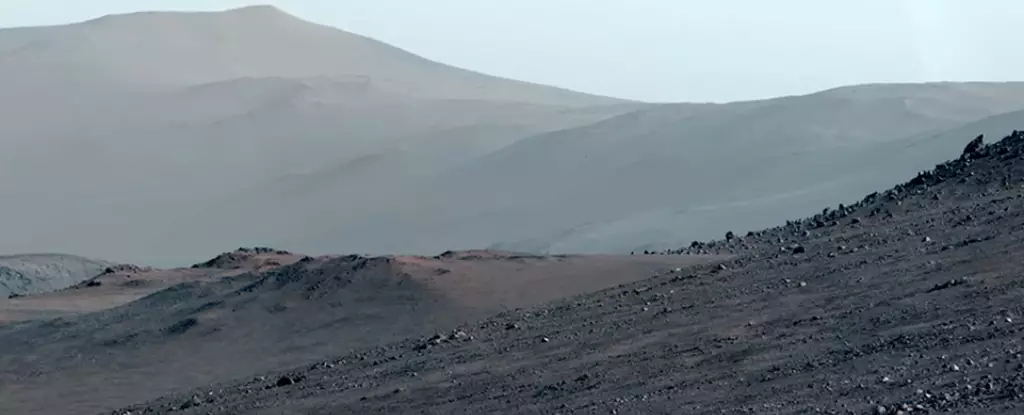In 2018, NASA made a pivotal decision to land the Perseverance rover in the Jezero Crater, a site that holds immense scientific significance due to its rich geological history. This choice was driven by the crater’s ancient lakebed characteristics, notably highlighted by a delta fan at its western edge. On Earth, delta formations emerge where flowing water deposits sediment, paving the way for the study of past environments. NASA’s scientists postulate that this feature, along with the presence of clay-rich sediments in Jezero, makes it an ideal candidate for the search for biosignatures—traces of past or possibly even present life on the Red Planet.
The Jezero Crater, formed approximately 3.9 billion years ago by a colossal impact, is a natural laboratory for Mars research. Scientists are especially keen on this site as it allows for exploration into the sedimentary processes and environmental conditions that might have once sustained life. The selection of Jezero reflects a growing understanding that studying such ancient aquatic environments is crucial in our quest to answer the age-old question: Did life ever exist beyond Earth?
In recent developments, the Perseverance rover successfully ascended to the rim of Jezero Crater, at a site now referred to as Lookout Hill. Over a rigorous three and a half months, the rover traversed a vertical elevation of 500 meters (1,640 feet), conducting scientific observations that contribute valuable data to our understanding of Mars. This achievement marks a significant milestone in the mission, as it allows the rover to embark on what the team terms the Northern Rim campaign. This new phase of exploration involves an anticipated journey of 6.4 kilometers (4 miles) across several geologically intriguing sites to acquire samples crucial for future analysis.
Since landing in Jezero in February 2021, Perseverance has accomplished notable science campaigns, meticulously cataloguing geological formations and collecting a plethora of samples. Each campaign—Crater Floor, Fan Front, Upper Fan, and Margin Unit—targets different sediment layers and structures, leading to a rich understanding of the lake’s historical context and the environmental changes Mars has undergone. The insight gleaned from the locations visited thus far illustrates the evolutionary timeline of the Martian surface and its past climatic conditions.
The Northern Rim campaign signifies an exciting transition in Perseverance’s exploration, venturing into geology unlike any encountered previously. As project scientist Ken Farley noted, this initiative presents an opportunity to study ancient rocks at the crater rim—pieces of Martian crust that were brought to the surface by the initial impact that created Jezero. These rocks are not just old; they represent some of the earliest formations in the solar system, offering clues about the primordial conditions of Mars and potentially Earth as well.
The campaign’s initial thrust will take Perseverance to a noteworthy outcrop, dubbed Witch Hazel Hill, which features over 100 meters (330 feet) of stratified rock. Each layer tells a story, one that may illuminate the environmental conditions present during different epochs of Martian history. The journey down the hill promises a temporal dive, providing insights that could reshape our understanding of the Red Planet’s climatic evolution and its capacity to host life.
After completing its analysis of Witch Hazel Hill, Perseverance will redirect its wheels towards the Lac de Charmes region. This area is of particular interest as it lies beyond the impact zone that shaped the Jezero Crater, thus potentially preserving features unaffected by the cataclysmic events of the distant past. Following this, the rover is set to retrace some distance back up the rim to investigate formations regarded as megabreccia, remnants of ancient bedrock fractured by an earlier impact event that contributed to the impressive landscape of the Isidis Planitia basin.
Geologically, this epoch, known as the Noachian Period, plays a key role in understanding Mars’ past. It was characterized by extensive fluvial erosion, evidenced by ancient river valley systems. The examination of these features is essential for reconstructing the planet’s history and understanding whether it could have supported life during its “warmer, wetter” conditions.
Despite the rugged Martian terrain that has posed challenges for the rover, the ingenuity of the Perseverance team has been noteworthy. Innovative solutions—such as using reverse driving techniques—have allowed the rover to negotiate obstacles it faces episodically. This adaptability showcases the exceptional engineering and operational capabilities of the team, ensuring Perseverance can continue its mission of scientific exploration and discovery.
The Perseverance mission doesn’t just symbolize a technological triumph; it is a bold step toward understanding our planetary neighbor. As scientists continue to glean insights from this dynamic exploration, each sample retrieved and every rock analyzed not only enriches our understanding of Mars but also enhances our comprehension of Earth’s own geological narrative. The quest for knowledge persists, blurring the lines between Earth and Mars as we seek connections that transcend our world.


Leave a Reply